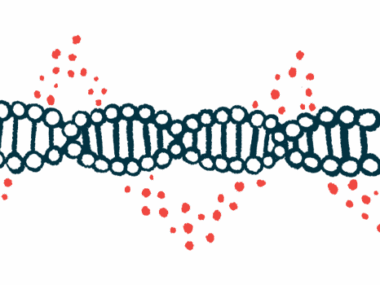‘Hidden’ mutation tied to AADC deficiency identified in siblings
Pair diagnosed decade before gene sequencing unraveled mystery
Written by |

Advanced genetic sequencing enabled the identification of a mutation — deep within a non-protein-coding portion of the DDC gene — that likely contributed to severe aromatic l-amino acid decarboxylase (AADC) deficiency in Japanese siblings, first diagnosed with the rare disease more than a decade ago.
At the time of their diagnosis, a mutation was found in only one copy of the gene for each sibling, although mutations in both inherited gene copies usually are needed for AADC to manifest.
In addition to helping explain the cause of AADC deficiency in this family, the finding of a hidden mutation more broadly demonstrates the usefulness of this genetic sequencing technique in diagnosing diseases with a similar inheritance pattern, the researchers noted.
Their study, “Detection of hidden intronic DDC variant in aromatic L-amino acid decarboxylase deficiency by adaptive sampling,” was published as a brief communication in the Journal of Human Genetics.
An AADC deficiency diagnosis typically needs mutations in both DDC copies
AADC deficiency is caused by mutations in the DDC gene, leading to a lack of the AADC enzyme that’s necessary for the production of various brain signaling chemicals, or neurotransmitters.
People inherit two copies of most genes, one from each biological parent. AADC deficiency is inherited in an autosomal recessive manner, meaning that both copies of the DDC gene need to be mutated in order for disease symptoms to manifest.
The scientists previously described siblings in a Japanese family severely affected by AADC deficiency, but with a mutation found in only one copy of the gene.
Genes contain exons — their protein-coding portions — interspersed with non-coding regions called introns. While introns don’t directly code for a protein, they serve other regulatory functions that can influence a gene’s activity.
Mutations in both introns and exons can cause disease, but standard genetic testing approaches don’t always allow for an in-depth look at introns. As such, it is possible that disease-driving mutations in those areas could be missed.
Revisiting the case of the Japanese siblings, the scientists performed a more in-depth genetic analysis looking for intron mutations in the DDC gene. They did so via a technique called targeted long-read sequencing.
Long-read gene sequencing spotted mutation deep within an intron
In the copy of the gene where no mutation had been previously found, they now identified a mutation called c.714+255 C>A hidden deep within an intron.
Predictive analyses indicated that the mutation was likely to affect splicing, the process that cuts introns from the genetic code and strings exons back together to produce mature templates for protein production.
That template, called messenger RNA (mRNA), is read by a cell’s protein-making machinery to produce a working protein. Via splicing, a single gene can lead to the production of multiple mRNA templates, yielding a few versions of a protein with slight structural or functional differences.
Cell culture experiments showed that the mutation indeed affected splicing, producing a faulty mRNA transcript that mostly would be degraded before the AADC protein could be produced.
Indeed, DDC mRNA levels were substantially lower in mutated cells relative to healthy ones.
While that faulty transcript also is evident at very low levels in healthy cells, they make large amounts of healthy mRNA that enable sufficient AADC production. With the intron mutation, only the faulty mRNA is evident.
While the number of known AADC deficiency-associated mutations is growing, few of those identified so far are thought to affect splicing, according to the scientists.
They believe there are “unknown variants causing splicing abnormalities” that have not yet been discovered with standard gene sequencing techniques.
“It is promising that long-read sequencing … can efficiently find hidden variants in unresolved autosomal recessive disorders,” the team concluded.
The two affected siblings were treated with a gene therapy designed to provide a working copy of DDC, reported in a 2019 published study. Treatment was associated with notable improvements in motor function for both.






